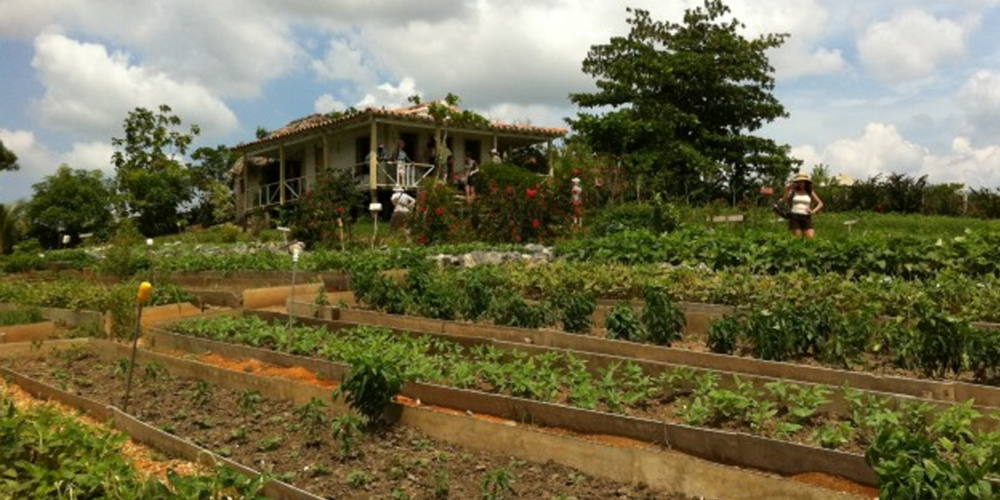Members of the Communist Party of Ireland visited Cuba in May, joining the annual International Brigades with hundreds of trade unionists, socialists and communists from every corner of the world. This two week program is organised by the Cuban Institute of Friendship with the Peoples in conjunction with the Cuba Solidarity Forum Ireland. As part of the trip we visited a co-operative farm managed by a local family in Sancti Spiritus.
After the revolution in 1959, to tackle the poverty and illiteracy inflicted on Cuba by the US-backed Batista regime, the new government prioritised literacy and education, with vast numbers of Cubans experiencing free university and many becoming teachers or working in the medical or science sectors. Before the revolution, 80% of Cubans lived in rural areas and 20% in cities, with many people working on the land. With the prioritisation of education, large numbers of rural dwellers left for the cities, many becoming doctors who found work around the world as part of Cuba’s world renowned healthcare system .
Due to this successful prioritisation of education, now 77% of people live in urban areas, after attending university. However, this has resulted in a shortage of farmers, and challenges in producing enough food for a population living under the genocidal trade sanctions inflicted by the United States, thus making the importation of food from outside the country more difficult.
The end of the Soviet Union meant an end to imported Soviet farming machinery and chemicals to Cuba and the beginning of what became known as “the special period”. This has forced the country into a self-sustainable, local and organic model, utilising livestock instead of machinery, and organic farming. Education, training and jobs in organic farming, especially for women farmers, was invested in by the state. This has resulted in a 55-85% decrease in the use of toxic chemicals in farming including the production of tobacco, which has improved the soils for other crops as well. Instead, natural herbicides and pesticides are used. And although food is still imported Cuba had the highest food production performance in Latin America and the Caribbean between 1996 to 2005.[1]
This emergency “special period” of the 1990s saw the government decentralise large, state-run farms to individuals and cooperatives. This period is famous for its urban farms, but there were many other programmes including one which sees the legal transfer of thousands of hectares of state land for free to families to live on, build their home and even set up a small, private farm business. This is on the one condition that farmers agree to use the land to farm a set percentage of produce for the local community. The vast majority of these family farms are part of the Cooperatives of Credit and Service (CCS). Membership is voluntary, but most farmers find the co-op highly beneficial as it will complete the paperwork necessary to run a farm, there is insurance against natural disasters, and solidarity between the farmers. Cooperative members receive a share of the farm’s produce and they can sell the excess products after the needs of the community are met. 2% of their weekly profits go back to the cooperative and if a farmer earns more than a certain amount from the produce they are subject to an extra government taxes on that profit.
The cooperative farms are linked to the local community groups known as the Communities for the Defence of the Revolution (CDR). The cooperative structure allows for skill-sharing and knowledge exchange, fostering agricultural education and empowering individuals with valuable farming expertise. These farms provide a wide range of meat, fish, fruits, vegetables, and honey to nearby neighbourhoods and organisations such as orphanages, women’s refuges and other community centres.
Before Cuba’s special period in the 1990s, Cuban children learned farming methods in school, spending some of each school day on a local cooperative farm helping out and learning to farm. The special period interrupted this education programme but farming is again being taught in schools from an early age and in student after-clubs. Trade schools teach animal health, vegetable health, veterinary, agricultural sciences and there are free university degrees available in all these areas.
When we visited one of these farms it was abundantly clear how important these methods in diversified, non-toxic organic farming while utilising biodiversity[2] made it possible to efficiently produce much of the fresh food eaten within the country without impacting the climate. This is all in the face of the impacts of climate change, extreme natural disasters and the crippling economic sanctions inflicted by the United States (costing the Cuban economy an estimated $1.1 trillion since 1955). Also apparent is the type of nutritional consumption based, climate-sustainable, collective farming would not be possible under any form of capitalism because once profits become the priority, the people’s nutritional requirements and the needs of the climate fade in importance. No other country has reached this level of success in farming and no other economic system would be able to do so.
If you are interested in visiting Cuba with the international brigades, contact the Cuba Solidarity Forum or the Communist Party of Ireland.
[1] “The Paradox of Cuban Agriculture”, Miguel A. Altieri and Fernando R. Funes-Monzote, Monthly Review. 2012, Volume 63, Issue 08 (January)
[2] For example, the pollination by wild hummingbirds and bees is monitored and utilised.






